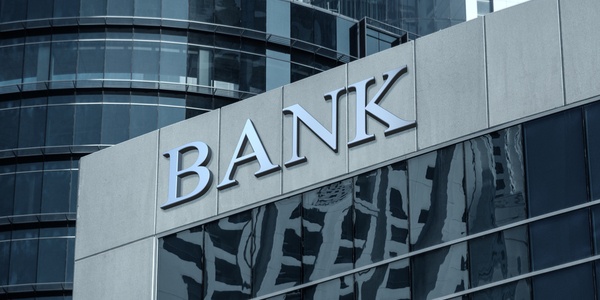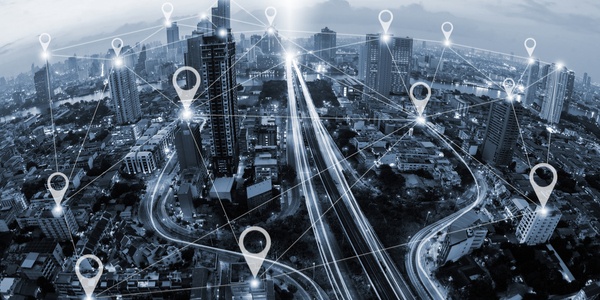
These days, FinTech is a buzzword. Already used by over 50% of financial customers worldwide the sector is growing rapidly. It is not just a trend anymore, it is an innovative industry that will shift our banking systems. It is a global movement.
But what exactly is FinTech, why is it getting more popular than traditional banking and what role does location data play? This article will clarify those and other questions about FinTech.
FinTech in a nutshell
Formed of the words financial and technology, FinTech is used to design and deliver financial services and products in a digital way. It usually refers to the segment of technology scene that is changing sectors such as crowdsourcing, mobile payments, fund raising, money transfer, loans and asset management.
FinTech vs. traditional banking

On the one hand customers continue to have the basic financial needs: borrowing, saving, spending, investing and protecting. But on the other hand their expectations to banking are constantly rising. They want the perfect mix of transparency, convenience, personalisation, security, simplicity and effectiveness. In that respect FinTech seems to be the perfect solution.
Due to a number of various factors customers are becoming more and more comfortable with financial technology. Next to the mentioned expectations that FinTech can better satisfy, its further advantages include plentiful VC funding, lower barriers to entry and accelerating technology evolution - scenarios that cannot be covered by traditional banking.
Furthermore, mobile devices and technology is common-place. Customers want more of that in the banking world too. And they want it on their terms. Thus FinTech targets especially the young generation, tech-savvy people and affluent segments. It is a key enabler to transform the business.
The 2017 World FinTech report, shows how financial technology will (or already does) change the banking landscape. In comparison to traditional banks, FinTech is superior regarding value for money and service efficiency.
For instance, TransferWise makes international transfers fast, easy and cheap for the customer.
Another example are the the so called Peer 2 Peer credits (e.g. Lending Club). No matter if being a student, the CEO of a startup or an artist, P2P credits are available for everyone and thereby are more flexible and with much lower interest rates.
But also traditional financial companies increasingly refocus accordingly in order to keep up. They implement FinTech in their service. FinTech creates opportunities for banks to enhance product offerings, service delivery and cost savings - valuable competitive advantages.
Big Data

A particularly bright area of FinTech is big data. Nowadays data is playing a leading role in all businesses. Due to data collection enormous changes in financial related analytics, data storage, data-driven marketing, cloud computing and SaaS business models already happened.
For example, Kreditech processes up to 20.000 data points that make it possible to serve credits to people with little or no credit history.
The increased amount of information provided by FinTech will offer many more possibilities in our near future.
Location

All in all it can be said that digital and mobile experience has become central in order to improve customers loyalty and market share. A new report by Forbes claims that location data is essential for success. Banks' understanding of their customers can be taken to the next level. Location intelligence offers new, rich insights about people without the necessity of a face-to-face interaction. There are two main focuses where location can have a major impact:
Channel optimization & site selection
In modern days, where digital channels become more and more powerful, banks struggle in balancing this shift with the need of physical locations and the hereby involved operation expenses. Hence it is extremely important to make the right decisions on where to close or open branches and which services to offer in the certain area. Location intelligence and analytics can provide the valuable information. For instance, data about areas where potential customers live, work and shop or about the location of competitors can help banks to decide on a place that best serves their needs. Such informations are highly efficient in terms performance, profitability, risk management, target setting and achievements as well as the overall market strategy. For example it can support a company in how to best interact with specific clients. Location data helps bank institutions to prioritize their services accordingly and thereby provide a good customer experience across all available channels (e.g. in a branch, ATM, mobile device, etc.). And all that in a cost effective way.
Saving valuable working time
Bank employees spent hours of their working time in answering location-regarded calls and inquiries from their clients. In times of a rather hectic lifestyles, people tend to use their credit card almost automatically. It is often the case that customers cannot recall a particular money withdrawal even though it is stated in their account. To refresh the memory, customers then call their banks to ask for the exact place of the ATM. Not only that this requires time and effort by the customer, it also occupies valuable time of the bank employee. Location data provides the same information directly in the credit card history of a person - beneficial for both customers and staff.
Geo-Fencing for targeted marketing
As the name implies, geo-fencing refers to a specific boundary around a place. When customers enter the restricted area, certain actions on their mobile devices (e.g. push-notifications) will happen. For example, customers of today have at least 2 bank cards in their wallet and banks obviously want the people to use their company's card. Precise geo-fencing can enable to promote this usage by delivering a targeted notification. This could be discounts or free gifts with any purchase. As a result, it strengthens loyalty and the relationship between customer and bank.
Besides, geo-coding offers possibilities such as altitude-based location for skyscrapers, indoor navigation or indoor tracking.
Reaching and influencing customers as they are on the physical path to purchase gets possible with the power of location. In times where alternative technology takes significant market share away from traditional companies, especially bank institutions have to consider their further steps very careful. Location data might be the key element for success.
August 18, 2017



.png)